Fortran was introduced in 1957 and remains the language of choice for most scientific programming Some of the most important features of Fortran 90 include recursive subroutines, dynamic storage allocation and pointers, user defined data structures, modules, and the ability to manipulate entire arraysA16 Allocate statement and mathematical operations on arrays One of the better features of Fortran 90 is dynamic storage allocation That is, the size of an array can be changed during the execution of the program To see how the dynamic allocation works in Fortran 90, consider the following simple example where we set up a unity matrixAn allocate shape specification is lowerbound upperbound A DEALLOCATE statement is DEALLOCATE (allocateobjectlist , STAT = scalarintegervariable ) Things to Know Each allocate object must be an allocatable array or a pointer;
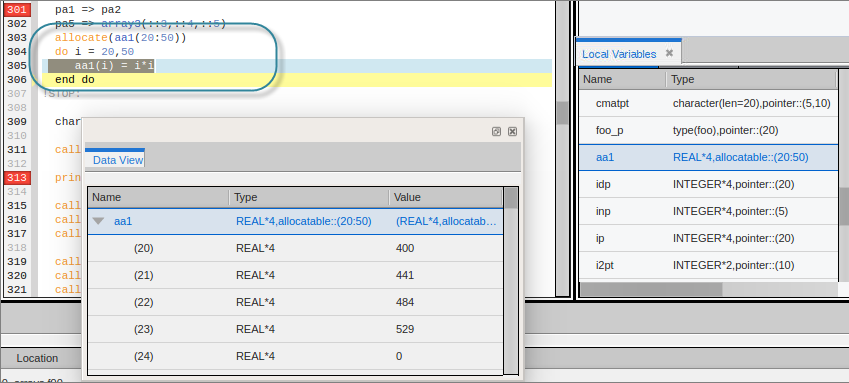
Fortran 90 Deferred Shape Array Types
Fortran 90 allocate
Fortran 90 allocate-Fortran 90/95 Deallocating variables Ask Question Asked 7 years, allocating and deallocating memory takes time so it is not advisable to repeatedly allocate and deallocate an array unless there is a good reason to do so Finally, as you mentioned, the operating system will reclaim all memory used by the program once the programFor anyone familiar with C pointers, Fortran 90 pointers are much more restrictive, and therefore less likely to be buggy and easier for a compiler to optimize Data objects with the pointer attribute can have their associated storage allocated and deallocated, facilitating dynamic memory use



Fortran
To ensure that Fortran 90 pointers are threadspecific, do not specify either the SAVE or STATIC attribute for the pointer These attributes are either specified explicitly by the user, or implicitly through the use of the qsave compiler option Note, however, that if a nonstatic pointer is used in a pointer assignment statement where the target is static, all references to the pointer areFortran 03 is a major extension of Fortran 95 This contrasts with Fortran 95, which was a minor extension of Fortran 90 Beside the two TR items, the major changes concern object orientation and interfacing with C Allocatable arrays are very important for optimization – after all, good execution speed is Fortran's forteFortran Dynamic Arrays A dynamic array is an array, the size of which is not known at compile time, but will be known at execution time Dynamic arrays are declared with the attribute allocatable The rank of the array, ie, the dimensions has to be mentioned however, to allocate memory to such an array, you use the allocate function
Formerly FORTRAN) is a generalpurpose, compiled imperative programming language that is especially suited to numeric computation and scientific computing Fortran was originally developed by IBM in the 1950s for scientific and engineering applications, and subsequently came to dominate scientific computing It has been in use for over six decadesHowever, Fortran 90 introduces the ALLOCATABLE array, permitting you to assign its memory space after the program starts This can make a big difference in the size of the disk file associated with your program, and the amount of computer memory required for executionDescription The ALLOCATE statement dynamically creates storage for array variables having the ALLOCATABLE or POINTER attribute If the object of an ALLOCATE statement is a pointer, execution of the ALLOCATE statement causes the pointer to become associated If the object of an ALLOCATE statement is an array, the ALLOCATE statement defines the shape of the array
Obtaining information on the size and shape of an array F90 (but not F77) is one of the few programming languages where programmers can determine the size of an array This feature is useful for writing functions that can manipulate array (matrices and vectors) of arbitrary size in a flexible mannerFortran (/ ˈ f ɔːr t r æ n /; Fortran Array Data and Arguments, Vectorization Examples The modern Fortran language has various types of arrays and an array sectioning feature that enables subsections of arrays to be passed as parameters to functions or be pointed by Fortran pointers For loops that operate on arrays, the compiler can generate unit stride vector code, non



2
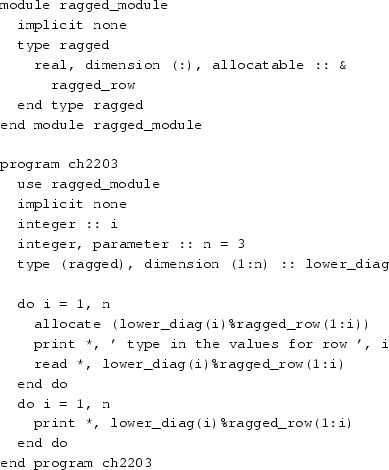



Data Structuring In Fortran Springerlink
About Press Copyright Contact us Creators Advertise Developers Terms Privacy Policy & Safety How works Test new features Press Copyright Contact us Creators3 Books ISO, Fortran 90 (standard), ISO Publications Dept, Case Postale 56, 1211 Geneva , or walt@atnetcomcom Metcalf and Reid, Fortran 90 explained, OUP (also All groups and messages



2




Application Of Fortran 90 To Ocean Model Codes
Fortran 90 2 Fortran 90 Student Notes are produced, the standards committee has adopted a policy of removing obsolete features This procedure adopted involves the inclusion of two lists with each new standard One list contains the deleted features, andFortran 90 Lecture 5 AS 3013 Arrays Memory allocation •Memory for arrays that are not local to a subprogram is allocated by the calling program, ultimately by the main program •But you may not know the actual size of your datasets, or they may varyFORTRAN actually allows the use of arrays of up to 7 dimensions, a feature which is rarely needed To specify a extended precision 3 dimensional array b with subscripts ranging from 1 to 10, 1 to and 1 to 30 we would write real (kind=ikind),dimension(10,,30) b Exercise 54




5 Analyzing Time Series Data With Arrays Modern Fortran Building Efficient Parallel Applications
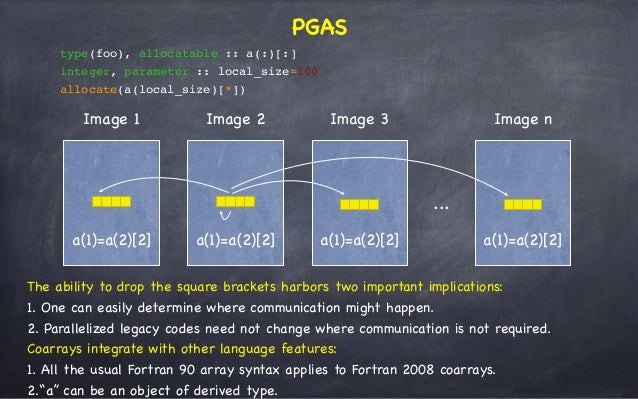



Towards Exascale Computing With Fortran 15
FORTRAN 90 has ALLOCATE and DEALLOCATE functions which are similar to malloc() Since you can import functions written in other languages (assembly), there have been ways to allocate memory in earlier FORTRAN releases which I used back in the good old daysTwo dimensional allocatable array real, dimension (,), allocatable bar This declares the variable but does not allocate any space for it !F90 Program StructureF90 Program Structure zA Fortran 90 program has the following formA Fortran 90 program has the following form programname is the name of that program specificationpart, executionpart, and subprogrampart are optional Although IMPLICIT NONEis also opp,tional, this is required in this course to write safe programs PROGRAMprogramname



Object Oriented Programming Via Fortran 90 Emerald Insight
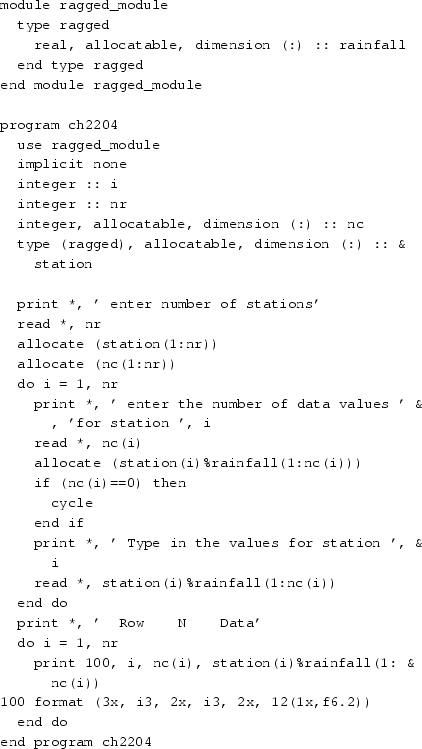



Data Structuring In Fortran Springerlink
I have used 'DEALLOCATE' funtion, but itFortran 90 Dynamic Memory The size of arrays can now be specified at run time Here's how a typical Fortran 77 program would manage an array whose size could vary at run time For instance,let us allocate an array in the main program and pass it to a subroutineWe can specify the bounds as usual allocate (foo (35)) !




Fortran 90 Arrays




Fortran 90 Gotchas Part 3 Acm Sigplan Fortran Forum
I am working as a software developer in a company with a code based on FORTRAN 90 Recently we have found that code was failing with lack of enough memory at some stage of the runTests have shown that using the "Deallocate" makes the pointers used "unassociated", but for some pointers the memory is not releasedThe bounds in the shape specification must be scalar integer expressionsA key feature of Fortran 90 that wasn't available in Fortran 77 or earlier versions is the addition of ALLOCATABLE arrays With f77 you always needed to declare the size of the array at the onset of the program However, with the new syntax you can




Fortran 90 Deferred Shape Array Types



Cobol Language
One dimensional allocatable array integer, dimension (), allocatable foo !I am a fortran beginner I have a problem in memory allocation I guess that this is caused by the limitation of memory When I run the code with Matlab, I use 'CLEAR' function and it run well except in computation time Would you please suggest me, how to express 'CLEAR' funtion in fortran 90/95?Arrays and Parallel programming in Fortran 90/95 Allocatable Arrays In the old days, the maximum size arrays had to be declared when the code waswritten This was a great disadvantage, as it resulted in wasted RAM(arrays size had to be the maximum possible) or in frequent recompilations Fortran90 allows for "allocatable" arrays



Fortran
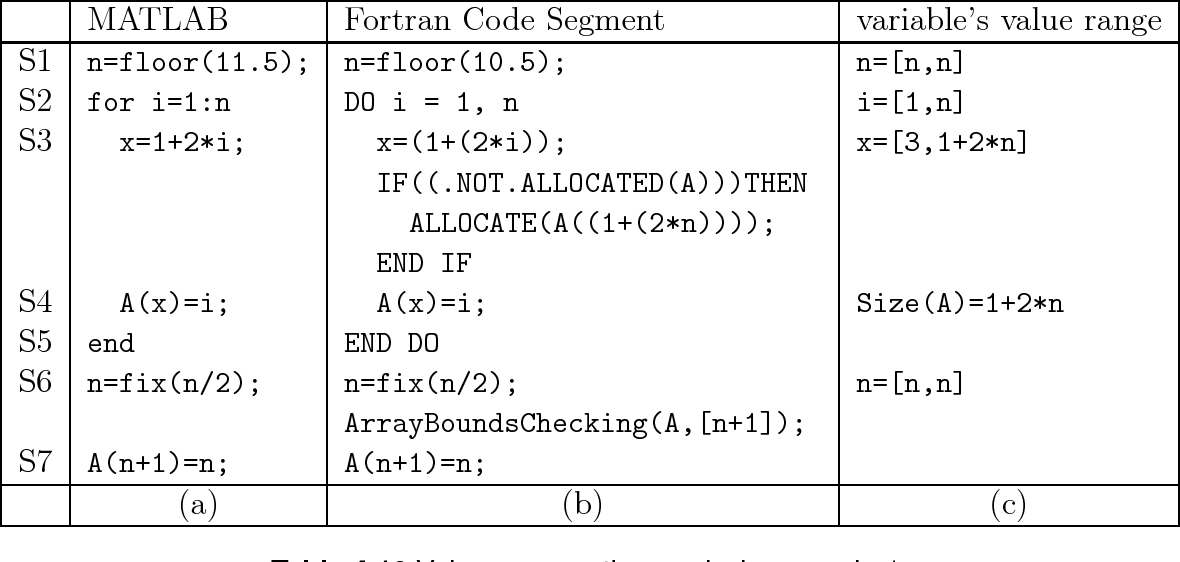



Pdf Mcfor A Matlab To Fortran 95 Compiler Semantic Scholar
Fortran 90 Tutorial The dimension of an array may be specified by a type specification statement of the form REAL, DIMENSION (10) A, B INTEGER, DIMENSION (09) C Here, the three arrays A, B, and C have each been dimensioned with 10 storage slots The index of the real arrays A and B start at 1 while the index for the integer array C starts at 0 The ALLOCATE statement and ALLOCATABLE type qualifier are features introduced in Fortran 90 They allow arrays whose size is determined at run time rather than at compile time In a nutshell, ALLOCATABLE is used as part of a type declaration to tell the compiler that the size of the array will be determined later, as the program runsLinkAdvanced Fortran 90 Advanced Fortran 90 This document is derived from an HTML page written at the San Diego Supercomper Center many years ago Its purpose is to Introduce Fortran 90 concepts to Fortran 77 programers It does this by presenting an example program and introducing concepts as various routines of the program are presented
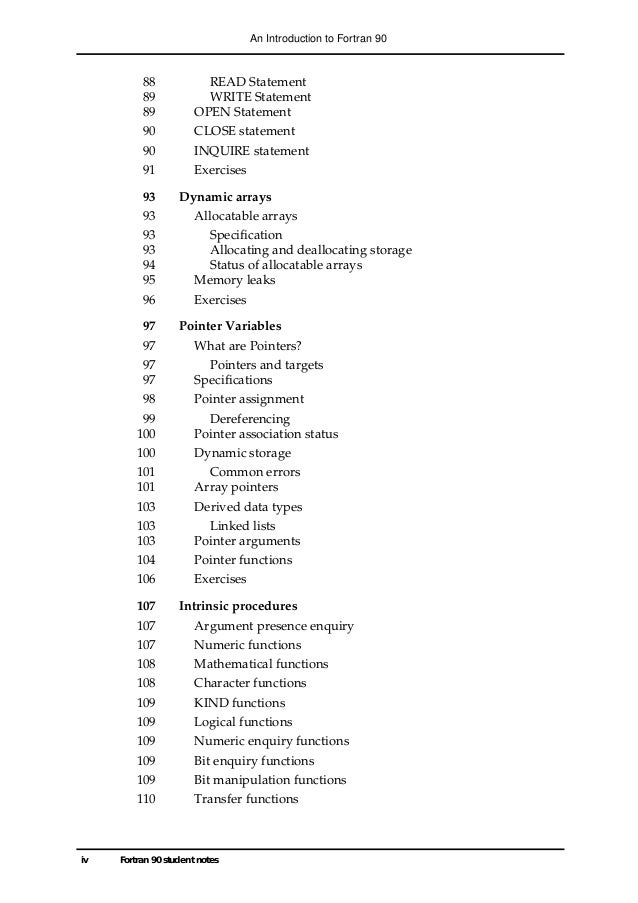



Intr Fortran90



2
The only way to allocate aligned memory in standard Fortran is to allocate it with an external C function, like the fftw_alloc_real and fftw_alloc_complex functions Fortunately, Fortran 03 provides a simple way to associate such allocated memory with a standard Fortran array pointer that you can then use normallyFortran 90 vs Fortran 77 •Fortran 90 was a major revision to Fortran 77 •Fortran 77 is a complete subset of Fortran 90 •F90 introduced major new features •Also introduced many useful minor features which can be gradually introducedFortran Best Practices¶ This page collects a modern canonical way of doing things in Fortran It is meant to be short, and it is assumed that you already know how to program in other languages (like Python, C/C, ) and also know Fortran syntax a bit




Application Of Fortran 90 To Ocean Model Codes Mark Hadfield National Institute Of Water And Atmospheric Research New Zealand Ppt Download
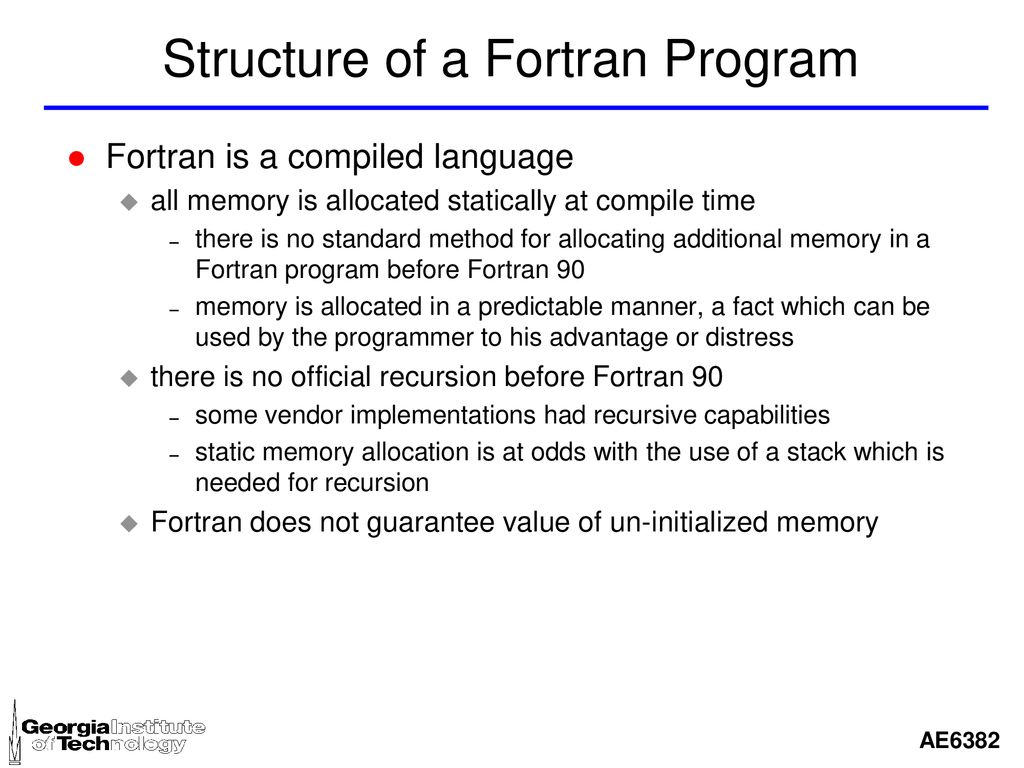



History Of Computing Fortran Ppt Download
Actually most Fortran compilers implement (DE)ALLOCATE as wrappers around malloc ()/free () with some added bookkeeping, inherent to all Fortran 90 arrays Usually it is better to preallocate a big enough scratch array and use it in tight loops instead of constantly allocating and freeing memoryALLOCATED (The GNU Fortran Compiler) Description ALLOCATED (ARRAY) and ALLOCATED (SCALAR) check the allocation status of ARRAY and SCALAR, respectively Standard Fortran 90 and later Note, the SCALAR= keyword and allocatable scalar entities are available in Fortran 03 and later Class Inquiry function SyntaxIn older Fortran codes, arrays are usually accessed element by element while in modern Fortran, what is called the Fortran 90 array syntax is used vector() = vector() 10 do j=1,n y() = y() m(,J) * x(j) enddo The array syntax allows for less explicit do loops With the "old Fortran" syntax




Fortran 90 95 Programming Victor Anisimov Ncsa Ppt Download
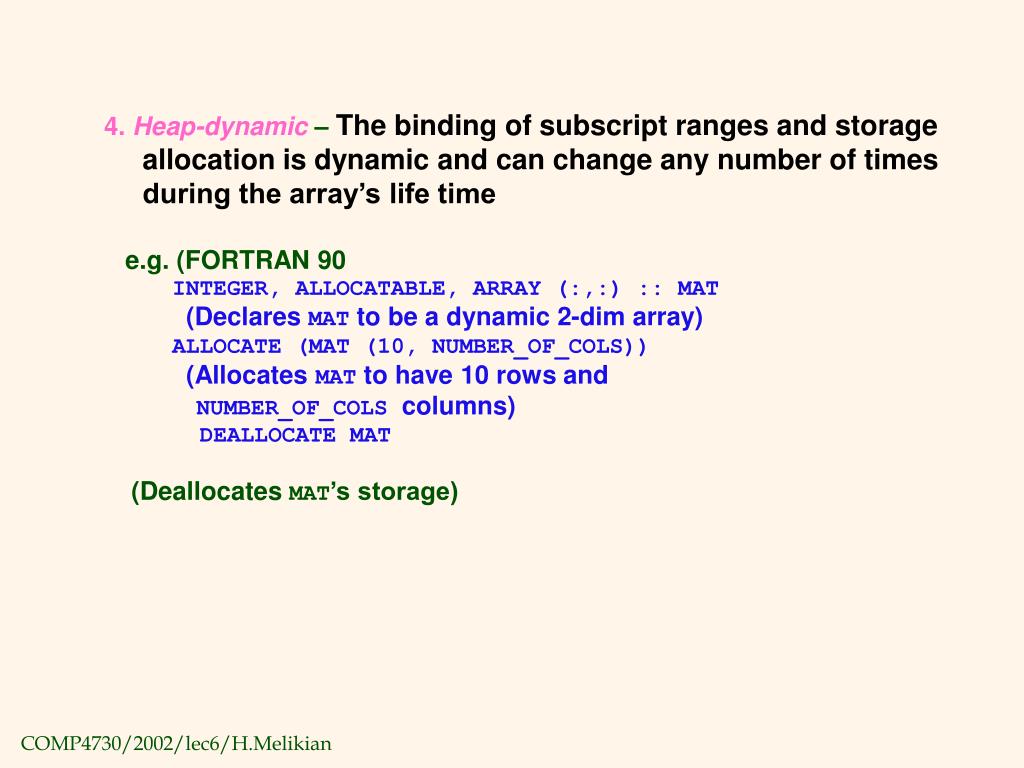



Ppt Data Types Powerpoint Presentation Free Download Id
Arrays can have the allocatable attribute !




Advanced Fortran Programming 005 Date And Time Random Numbers Where Construct Youtube




Fortran Wikipedia




Why Does A Subroutine With An Array From A Use Module Statement Give Faster Performance Than The Same Subroutine A Locally Sized Array Stack Overflow




Generic Programming In Fortran 90 Acm Sigplan Fortran Forum
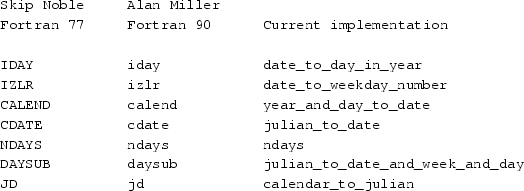



Data Structuring In Fortran Springerlink




Fortran 90 For Scientists And Engineers Amazon Co Uk Hahn Brian D Books



Fortran90 Computational Fluid Dynamics Is The Future
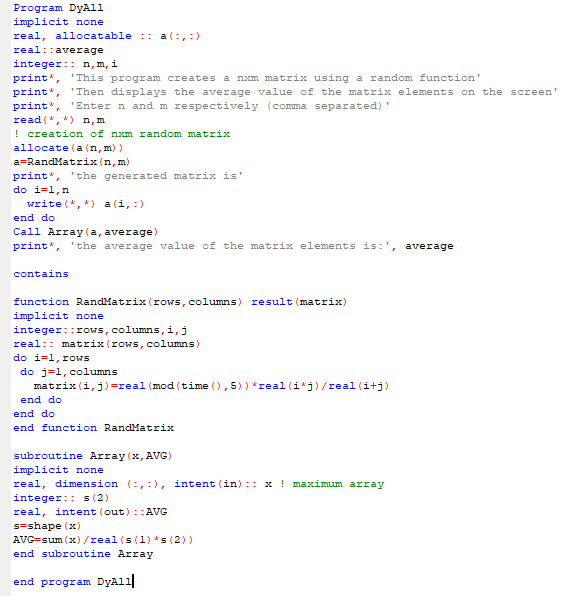



Use Of Modules Restructure Program Dyall Available Chegg Com




Program Fortran 90 Implementing The Quick Sort Algorithm Download Scientific Diagram




Access Violation When Writing To A Fortran Allocatable Array Stack Overflow




F2py Python Fortran Notebooks




Allocate Multiple Arrays With Single Shape Stack Overflow
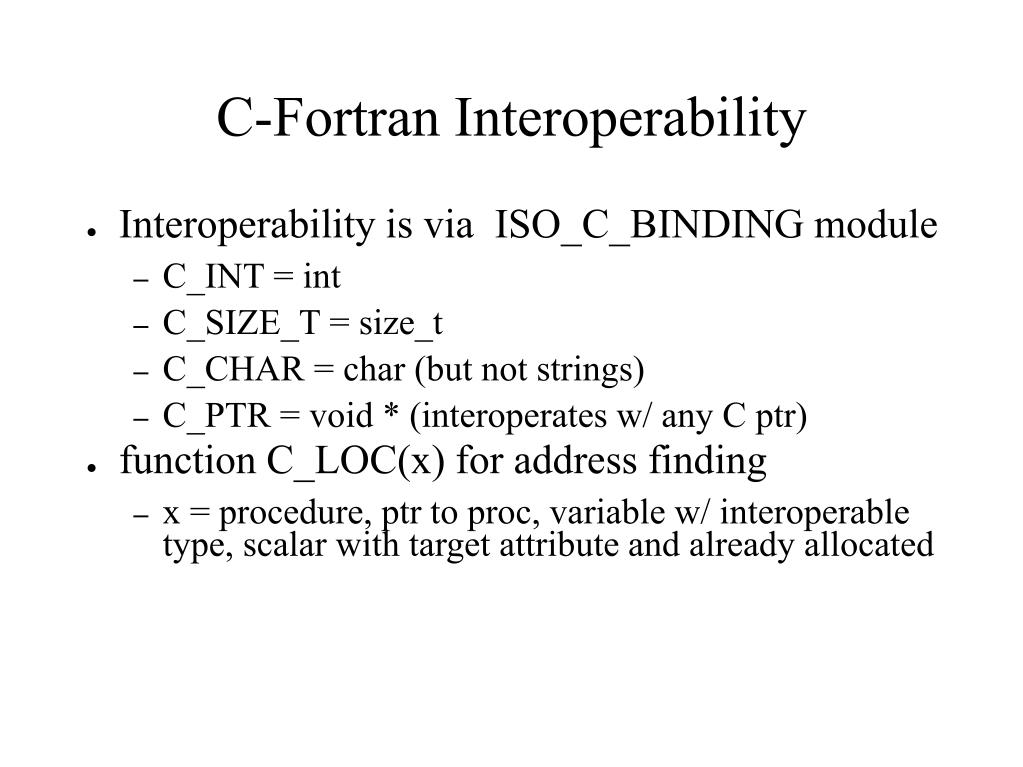



Ppt Fortran 90 95 And 00 Powerpoint Presentation Free Download Id




Program Fortran 90 Implementing The Quick Sort Algorithm Download Scientific Diagram




Fortran An Overview Sciencedirect Topics
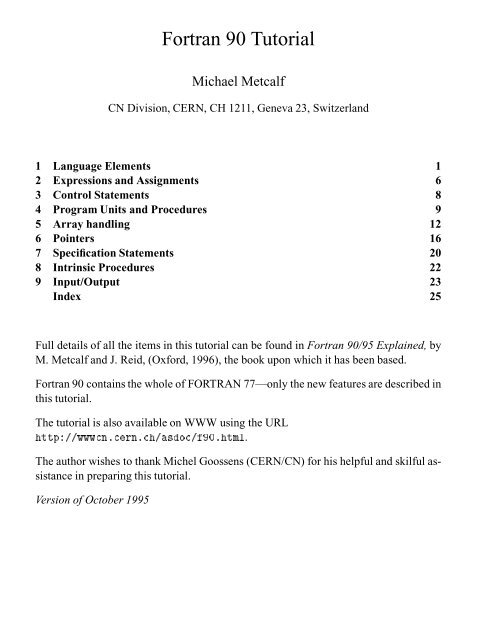



Fortran 90 Tutorial Grdelin



2




Introduction To Fortran Serial Programming A Simple Example




Data Structuring In Fortran Springerlink




Sc16 Preview Modernizing Modularizing Fortran Codes
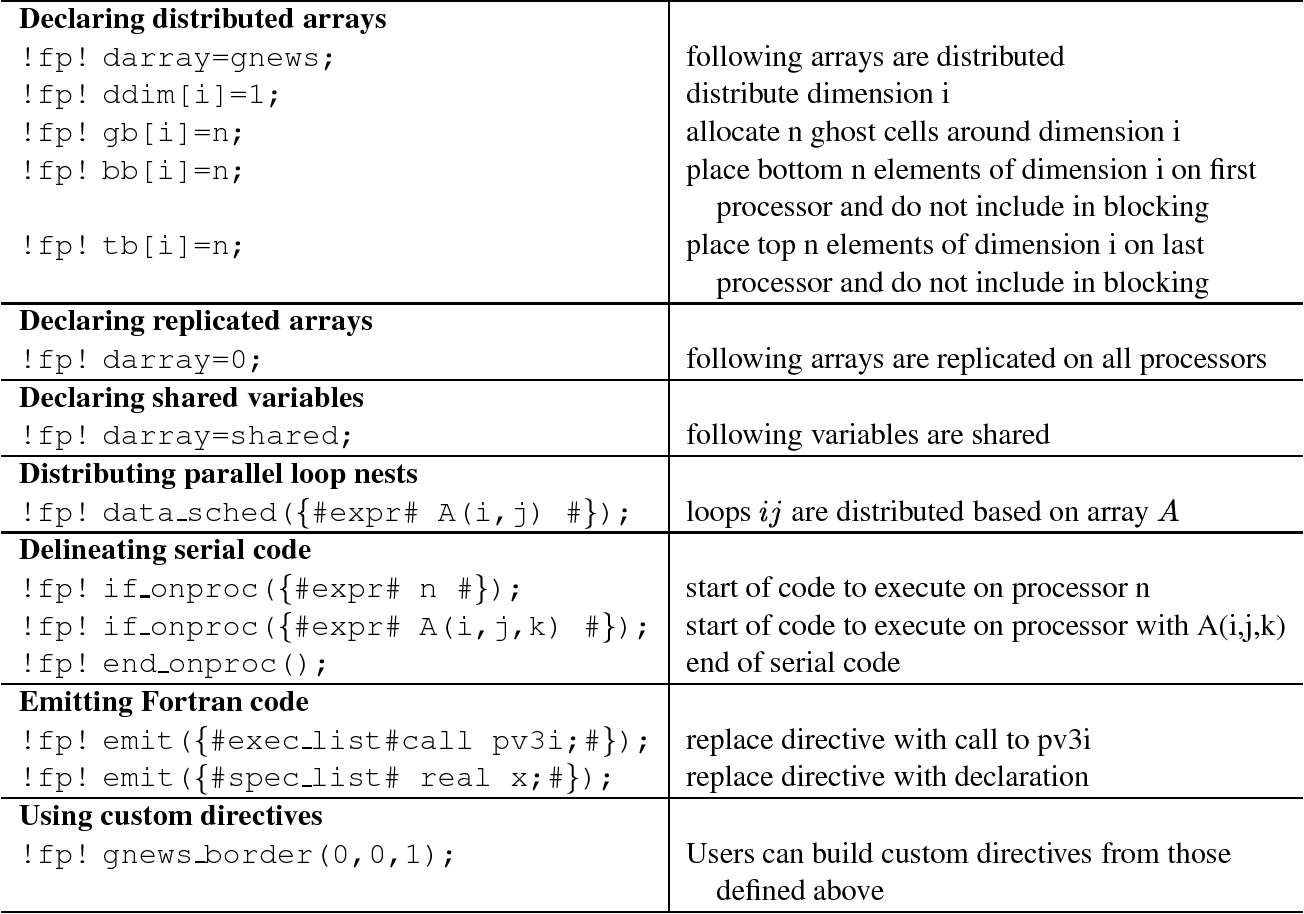



A Programmable Preprocessor For Parallelizing Fortran 90 Semantic Scholar
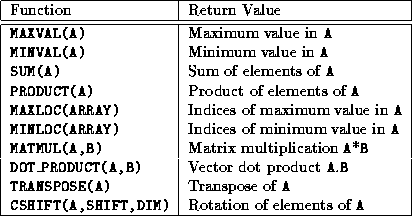



7 2 Fortran 90




Comando Allocatable Para Fortran Youtube




Modernizing Modularizing Fortran Codes With 03 Standards



2
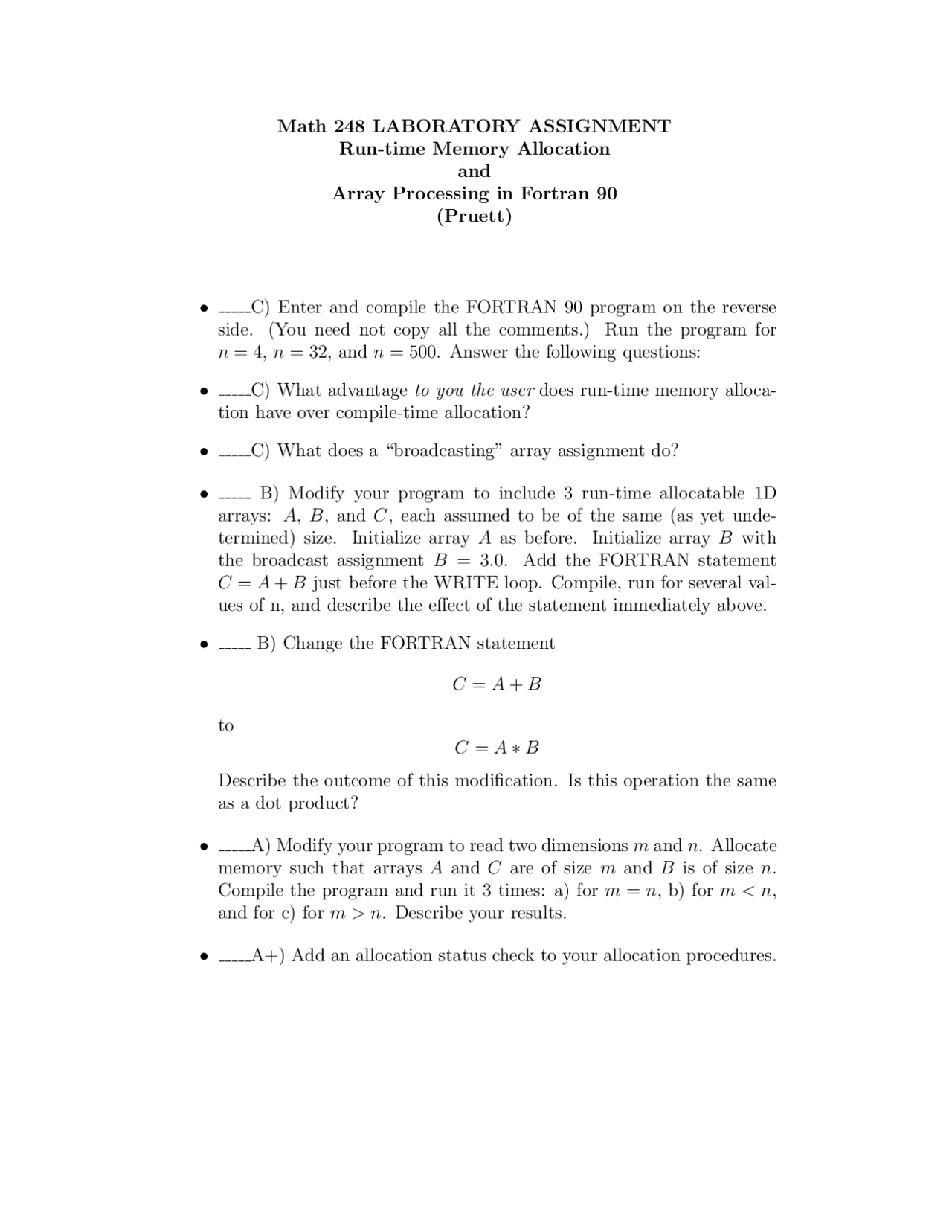



Run Time Memory Allocation And Array Processing In Fortran Math 248 Docsity




How To Program In Fortran With Pictures Wikihow




Fortran Wikipedia




Pdf Generic Programming In Fortran 90 Arjen Markus Academia Edu




Example Illustrating The Handling Of Common Variants By Emulating The Download Scientific Diagram
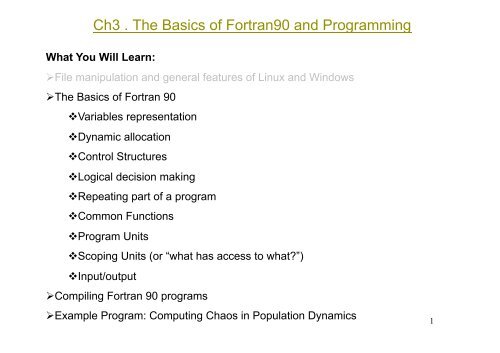



Basics Of Fortran Course Notes



1
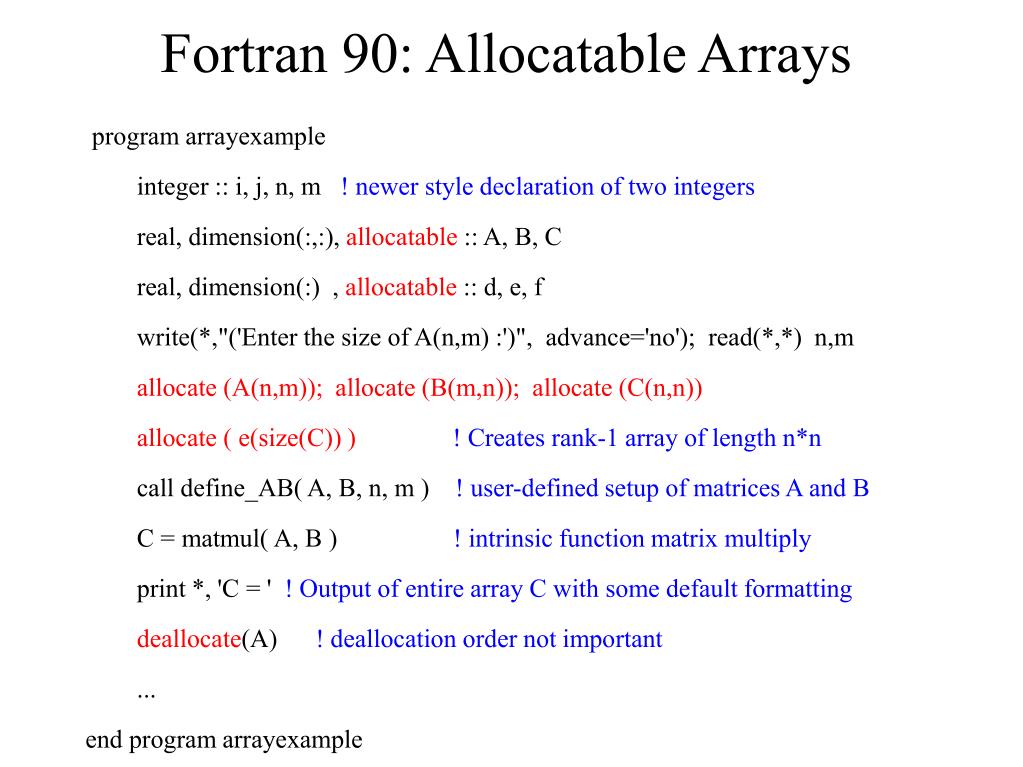



Ppt Fortran 90 95 And 00 Powerpoint Presentation Free Download Id




Example Of Recursive Allocation Of Nested Domain Data Structures Download Scientific Diagram




Application Of Fortran 90 To Ocean Model Codes




Fortran Wikipedia



Fortran90 Computational Fluid Dynamics Is The Future




The Fortran 90 Programming Language Book Chapter Iopscience



2
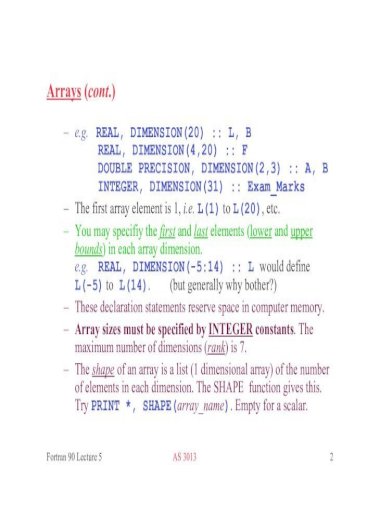



Fortran 90 Arrays



2



Fortran90 Computational Fluid Dynamics Is The Future




Chapter 6 Data Types Ppt Download



2



2




Application Of Fortran 90 To Ocean Model Codes



2




19 May 21 Fortran 9095 Programming Victor Anisimov




Fortran 90 And Computational Science Sherrill Fortran 77 Control Structures Numeric Processing




Solved Debug Issue Relating To Allocatable Variables In User Defined Type Constructs Status Intel Community
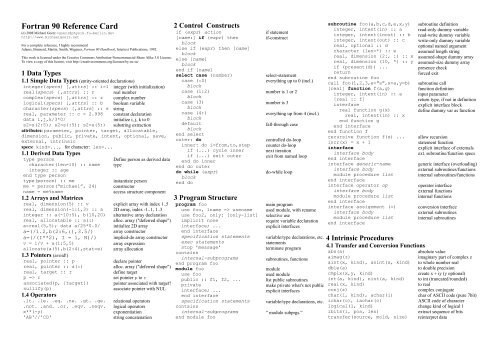



Fortran 90 Reference Card



2



Modernizing Old Fortran In Fortran Wiki
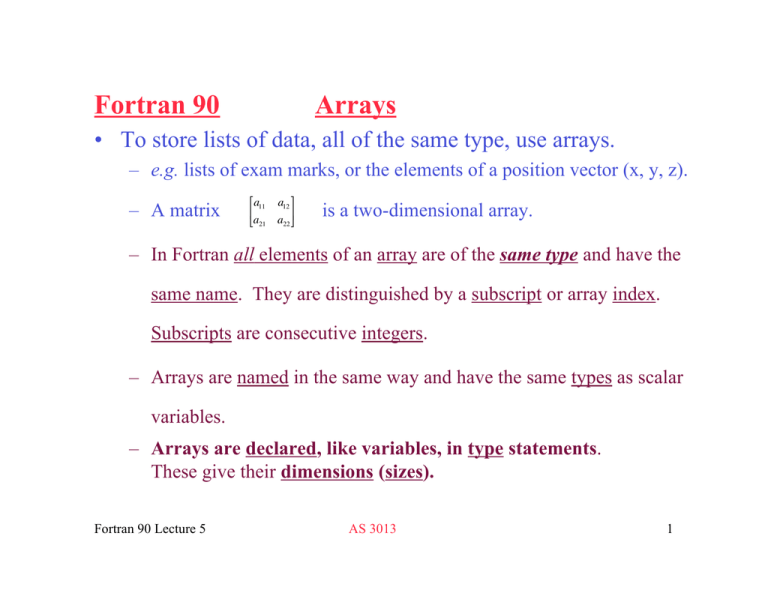



Fortran 90 Arrays



Lahey Lf90 Details




0060 0068 Pdf Pdf Parameter Computer Programming Subroutine




Fortran 90 Yetmen Wang Fortran 90 95 00 Introduction Fortran Versions Program Structure New Source Form Oo Programming Array Programming Significant Ppt Download




Fortran Programming Tutorials Revised 024 Formats Arrays Allocate Limits Of Int Youtube



Performance Of Rank 2 Fortran 90 Pointer Arrays Vs Allocatable Arrays Unt Digital Library



2
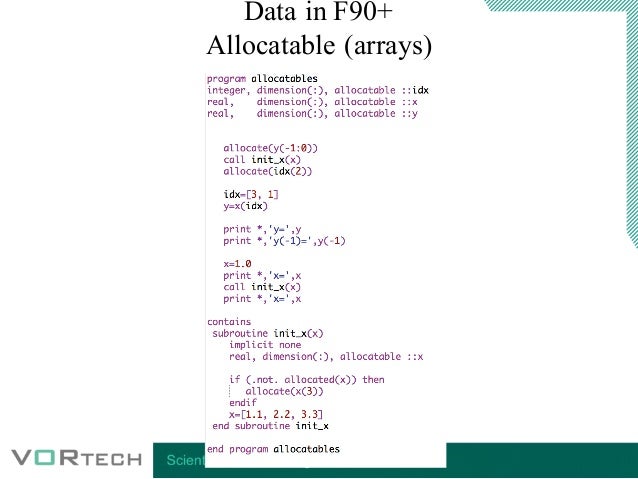



Introduction Modern Fortran Short
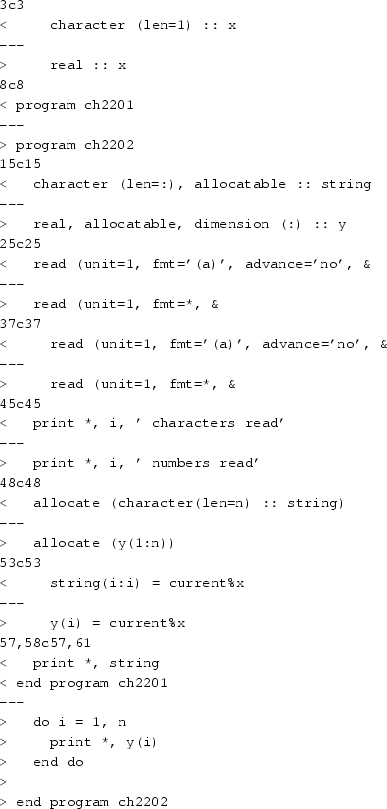



Fortran 77 Programming Examples Pdf
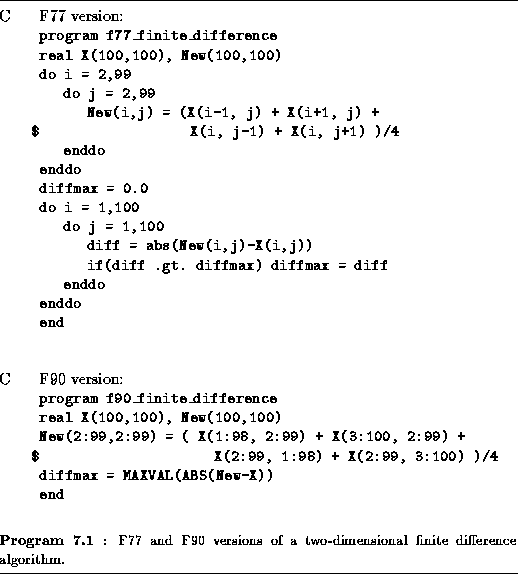



7 2 Fortran 90




The Fortran 90 Programming Language Book Chapter Iopscience
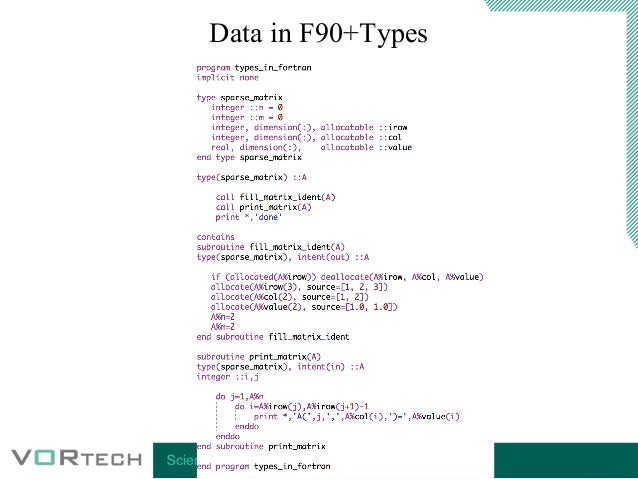



Introduction Modern Fortran Short




Fortran Programming Tutorials Revised 024 Formats Arrays Allocate Limits Of Int Youtube




Fortran 90 Performance Problems Acm Sigplan Fortran Forum




Data Structuring In Fortran Springerlink
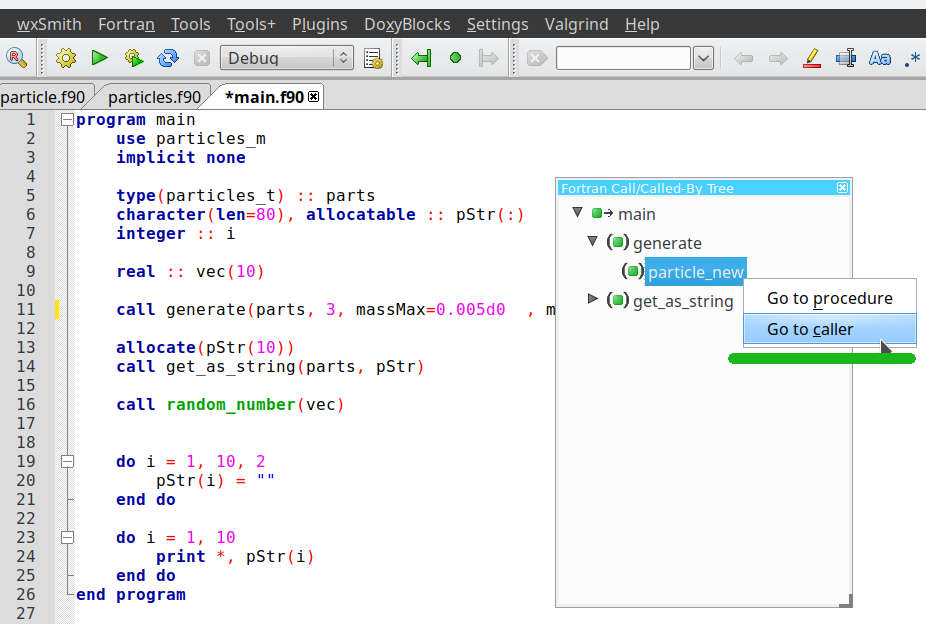



Code Blocks Ide For Fortran Cbfortran




How To Allocate An Array In Fortran Youtube




Which Part Of My Fortran Program Is Wrong



1




Application Of Fortran 90 To Ocean Model Codes




Fortran 41 Programs With Arbitrary Sized Arrays Using Allocate Deallocate Statements Youtube



2



2



2
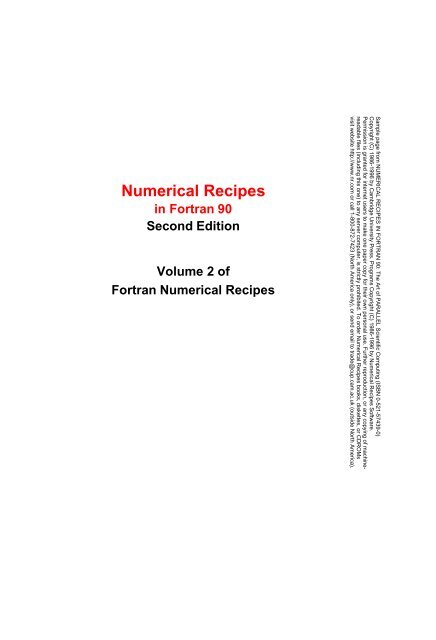



Numerical Recipes In Fortran 90 Pdf Astrophysics And Neutrino




The Fortran 90 Programming Language Book Chapter Iopscience



2




Fortran Gdb Debugging Wrong Array Values Vscode Cpptools
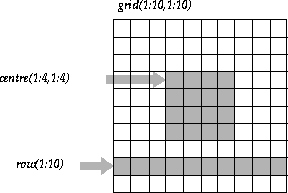



Introduction To Fortran 90 Pointer Variables Qub




Array Dimension An Overview Sciencedirect Topics




Pdf Should C Replace Fortran As The Language Of Scientific Programming Semantic Scholar



0 件のコメント:
コメントを投稿